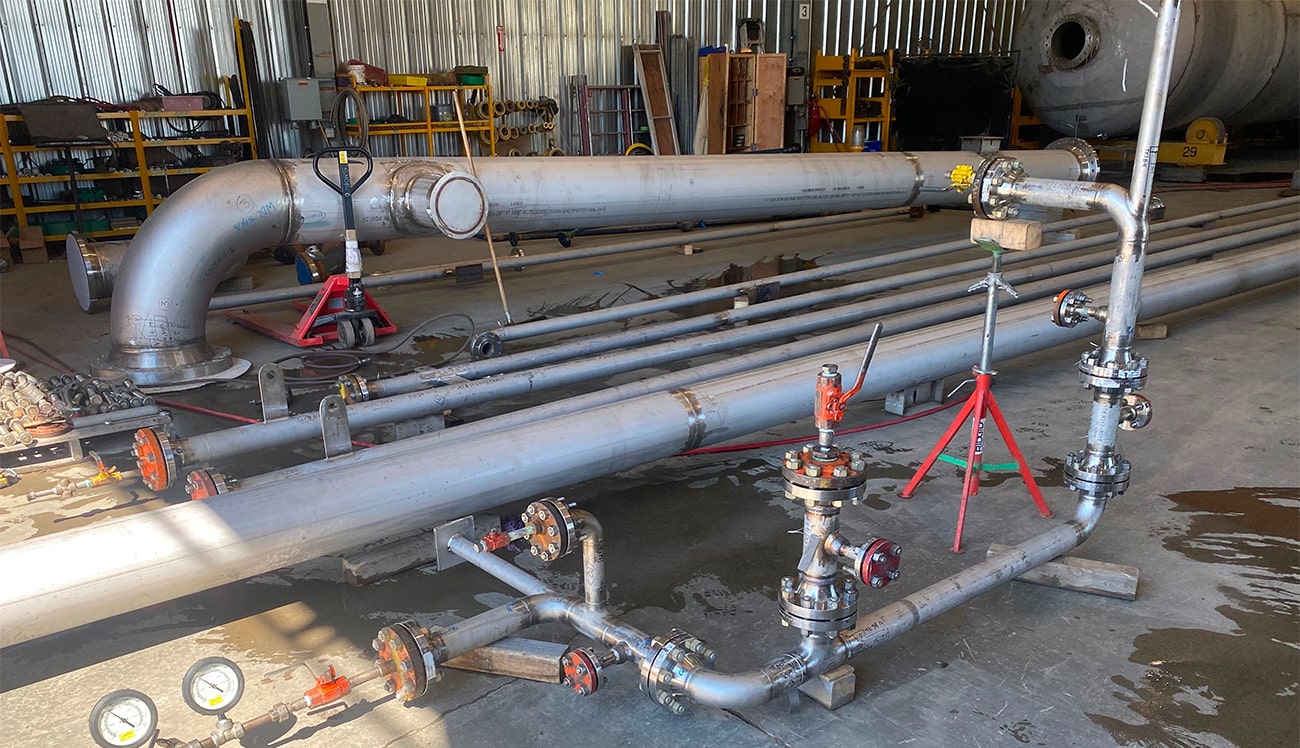Experience Excellence: Premier Pipeline Welding Inspection Services You Can Depend On
Experience Excellence: Premier Pipeline Welding Inspection Services You Can Depend On
Blog Article
Important Pipeline Welding Inspection Tips for Quality Guarantee
Exactly how can one assure the high quality of these welds that connect the pipe areas? By understanding the essential pipe welding evaluation suggestions, professionals can avert possible hazards, decrease costly repairs, and support the integrity of these essential facilities.

Relevance of Welding Examination
Welding inspection plays an important duty in making certain the structural honesty and safety and security of pipe systems. By thoroughly analyzing welds, assessors can recognize any type of defects or imperfections that can jeopardize the stability of the pipe. These inspections are crucial for preventing leaks, tears, and various other potentially disastrous failings that can result in ecological damages, financial losses, and also death.
The relevance of welding inspection can not be overemphasized, as the top quality of welds directly affects the general efficiency and durability of the pipe. Through non-destructive testing approaches such as visual examination, ultrasonic testing, radiography, and magnetic fragment testing, examiners can spot imperfections that may not be visible to the nude eye. By determining and attending to these problems early, welding examination aids to make sure that pipes fulfill sector standards and regulative demands.
Inevitably, welding examination is an essential element of quality control in pipe building, repair work, and maintenance (Pipeline Welding Inspection). By upholding rigorous assessment standards, market experts can alleviate threats and promote the security and dependability of pipeline systems
Usual Welding Problems
Among the obstacles faced in pipeline welding, common issues can considerably impact the structural stability and performance of the welded joints. Fractures in the weld can propagate over time, compromising the structural stability of the pipeline. Finding and resolving these usual issues via extensive inspection and high quality control processes are vital for making sure the reliability and safety of pipeline welds.
Evaluation Methods for Pipes


In making certain the structural stability and dependability of pipe welds, the application of strenuous examination methods is paramount. Numerous evaluation approaches are employed to identify prospective problems and make certain the general high quality of the welds. Non-destructive screening (NDT) methods such as radiographic screening, ultrasonic screening, magnetic particle screening, and liquid penetrant screening are commonly made use of in pipe welding evaluation. Radiographic screening includes making use of X-rays or gamma rays to discover interior defects, while ultrasonic screening makes use of high-frequency sound waves to recognize flaws. Magnetic particle testing is effective for discovering surface-breaking problems, and liquid penetrant testing is made use of to detect surface area fractures. Visual inspection is additionally important in pipe welding to determine any kind of noticeable problems or gaps. In addition, automated inspection techniques making use of advanced innovations like drones and robotics are significantly being employed to improve the efficiency and precision of pipe this link inspections. By employing a mix of these inspection methods, pipeline bonded quality can be assured, and potential problems can be minimized before they escalate into bigger problems.
Ensuring Quality Control Requirements
To promote strict high quality assurance criteria in pipeline building and construction, meticulous adherence to developed market methods and standards is critical. Quality assurance in welding procedures calls for an extensive strategy including numerous stages of pipe go to this website building and construction. Implementing a robust top quality administration system that includes regular audits and reviews can additionally improve the total top quality guarantee standards in pipeline welding.
Protecting Against Pricey Repairs
Offered the important relevance of keeping stringent quality control requirements in pipeline building and construction, an aggressive strategy to avoid expensive repair services is essential. By carrying out detailed inspection methods throughout the welding process, possible concerns can be identified and fixed early on, inevitably conserving both money and time. One vital facet of stopping costly repairs is making certain that welders are properly educated and accredited, as this dramatically lowers the chance of defective welds that might cause future failures. In addition, making use of advanced inspection strategies such as non-destructive testing can help find any kind of defects or variances in the welds prior to they escalate right into significant troubles. Regular maintenance checks and tracking of ecological factors that might influence the integrity of the pipeline are additionally crucial in preventing costly fixings. By spending in preventative steps and focusing on quality control at every stage of the pipeline welding procedure, firms can decrease the threat of expensive fixings and ensure the lasting reliability of their framework.
Conclusion
Finally, adherence to appropriate welding inspection techniques is vital for ensuring the quality and integrity of her response pipes. By recognizing typical welding flaws and carrying out detailed evaluation processes, costly repairs can be prevented, and high quality assurance requirements can be met - Pipeline Welding Inspection. It is important for pipeline welders to focus on inspection treatments to preserve the safety and dependability of the infrastructure they are servicing
The relevance of welding evaluation can not be overemphasized, as the quality of welds straight affects the overall performance and long life of the pipe. Non-destructive testing (NDT) techniques such as radiographic testing, ultrasonic testing, magnetic fragment testing, and liquid penetrant screening are typically used in pipeline welding examination. Visual examination is also vital in pipe welding to identify any visible issues or suspensions. Additionally, computerized evaluation techniques utilizing sophisticated innovations like robotics and drones are significantly being utilized to enhance the performance and accuracy of pipeline assessments.In final thought, adherence to correct welding examination strategies is important for ensuring the high quality and integrity of pipes.
Report this page